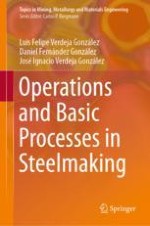2021 | Buch
Operations and Basic Processes in Steelmaking
verfasst von: Prof. Dr. Luis Felipe Verdeja González, Dr. Daniel Fernández González, Prof. Dr. José Ignacio Verdeja González
Verlag: Springer International Publishing
Buchreihe : Topics in Mining, Metallurgy and Materials Engineering
